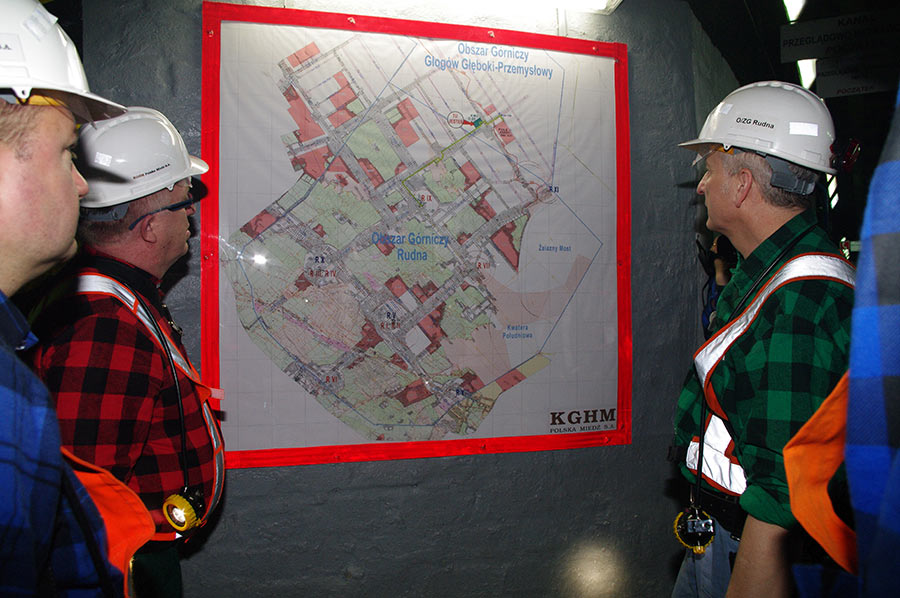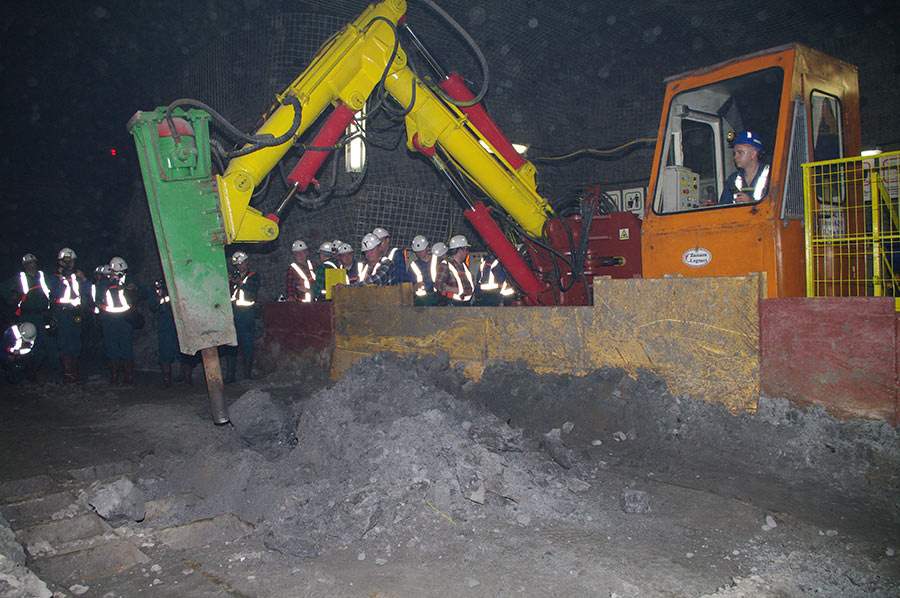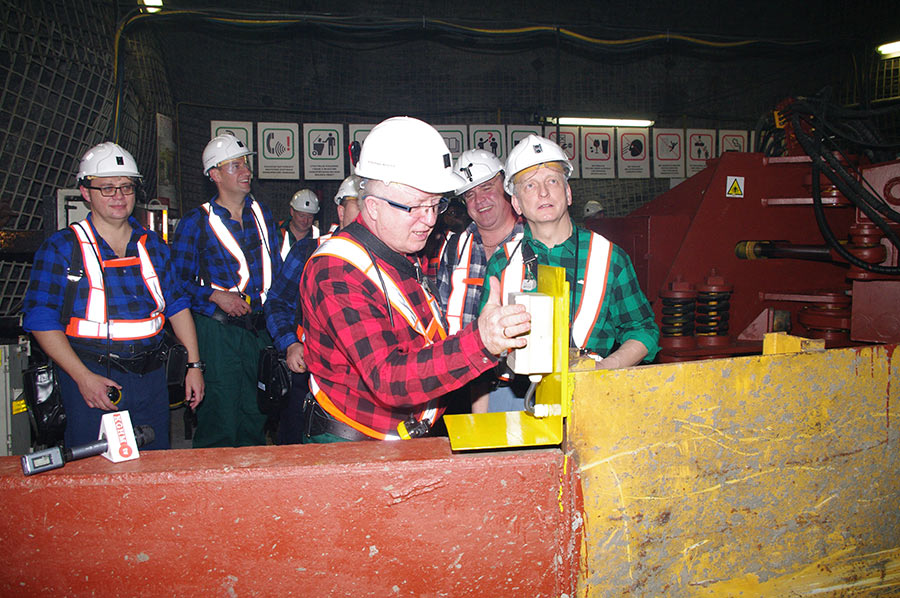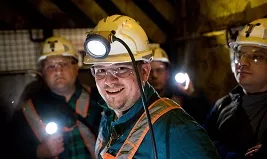KGHM – world’s largest silver and eighth biggest copper producer – begins production below the level of 1,200 meters in the “Deep Głogów” mining area in Poland. The orebody will be exploited by the two existing mines, “Rudna” and “Polkowice-Sieroszowice”. The development of “Deep Głogów” will enable KGHM to continue mining activity in Poland, based on its own resources, for the next 30–40 years.
Preparatory and accessing works before the launch of the first exploitation field in “Deep Głogów” began in 2010. They included construction of mining excavations and heavy machinery chamber, as well as ventilation and air-conditioning infrastructure. In December last year, the first bucket ore was mined from the GG-1 ventilation shaft. The construction of this mine shaft has been carried out in stages and will be completed in 2019 as the deepest of KGHM’s 31 wells, having depth of 1,340 meters and diameter of 7.5 meters.
“The development of copper orebodies located below 1,200 meters is a natural step for KGHM in Poland. The start of production below this level in “Deep Głogów” is opening us a door to new resources with high metal contents. Our goal is to keep using optimal production capacities of Poland’s mines and smelters for the coming decades. We plan to maintain an annual production of ca. 30 million tons of ore and ca. 2 million tons of copper concentrate. We are also investigating the potential of further copper extraction in the areas north of the deposits which are currently being developed,” said Herbert Wirth, President & CEO of KGHM Polska Miedź S.A.
KGHM has access to the fourth largest copper resources globally. In Poland they are estimated at 1.2 billion tons of ore. At the current level of production, this should let KGHM’s Polish mines work for the next 30–40 years. To achieve it, development of a deep mining system and launch of new exploitation fields is necessary. This will enable a full access to the “Deep Głogów” orebody, which accounts for about one quarter of copper and about one third of silver resources in the whole area covered by KGHM’s licenses in Poland.
“The development of the “Deep Głogów” mining area is a considerable technological challenge. From the current level of 950 meters, we are going 260 meters deeper. This equals working in a significantly higher temperature and air humidity, which needs to be compensated by stronger ventilation and central air-conditioning. On top of that, the distance from the shaft to the exploitation field will rise to 8 kilometers, which will result in more than doubled length of ventilation systems and the effective working hours shorter by 30 per cent. As a consequence, the deeper we mine, the higher costs of copper production we will report,” said Wojciech Kędzia, Executive Vice-President & COO of KGHM Polska Miedź S.A.

Production in the “Deep Głogów” area means also higher exposure to potential gas and geodynamic hazards. These risks were identified through seismic scanning, which was the first time in the world this method was used on such a large scale. Seismic scanning allows to recognize the structure of rock mass by means of longitudinal and transversal waves. Based on the waves’ dispersion time, pattern and shape, a detailed assessment of geological layers and weaknesses in their structure is prepared, in order to identify potential threats to mining activities. The waves were induced from 62 points in “Rudna” mine, at a depth of ca. 1,000 meters.

In 2004–2014, total capital expenditures for the development of exploitation field in the “Deep Głogów” area have amounted to over USD 300 million (PLN 931 million). The area’s resources are estimated at above 300,000 tons of ore with an average copper content of 2.5 percent. In 2014, production from “Deep Głogów”, through “Rudna” mine, will reach ca. 1 million tons of ore and ca. 14.5 thousand tons of electrolytic copper. In the future, mining operations in this area will be conducted by both “Rudna" and “Polkowice-Sieroszowice” mine. Production from “Deep Głogów” should peak in 2028–2035, reaching 10–11 million tons of ore and 200–220 thousand tons of electrolytic copper annually.

About KGHM
KGHM is a Poland-based and globally operating mining company, with more than half a century of experience in the industry. It is the world’s largest silver and eighth biggest mined copper producer, with the offered range of products also including rhenium, lead, gold, molybdenum, nickel and platinum group metals. KGHM has a broad portfolio of producing, development and exploration projects, spanning the globe in Poland, Germany, Canada, Chile and the USA. In mid-2014, initial production of copper, molybdenum and gold ore by open pit methods is planned in its Sierra Gorda mine, located in Chile’s Antofagasta region.





